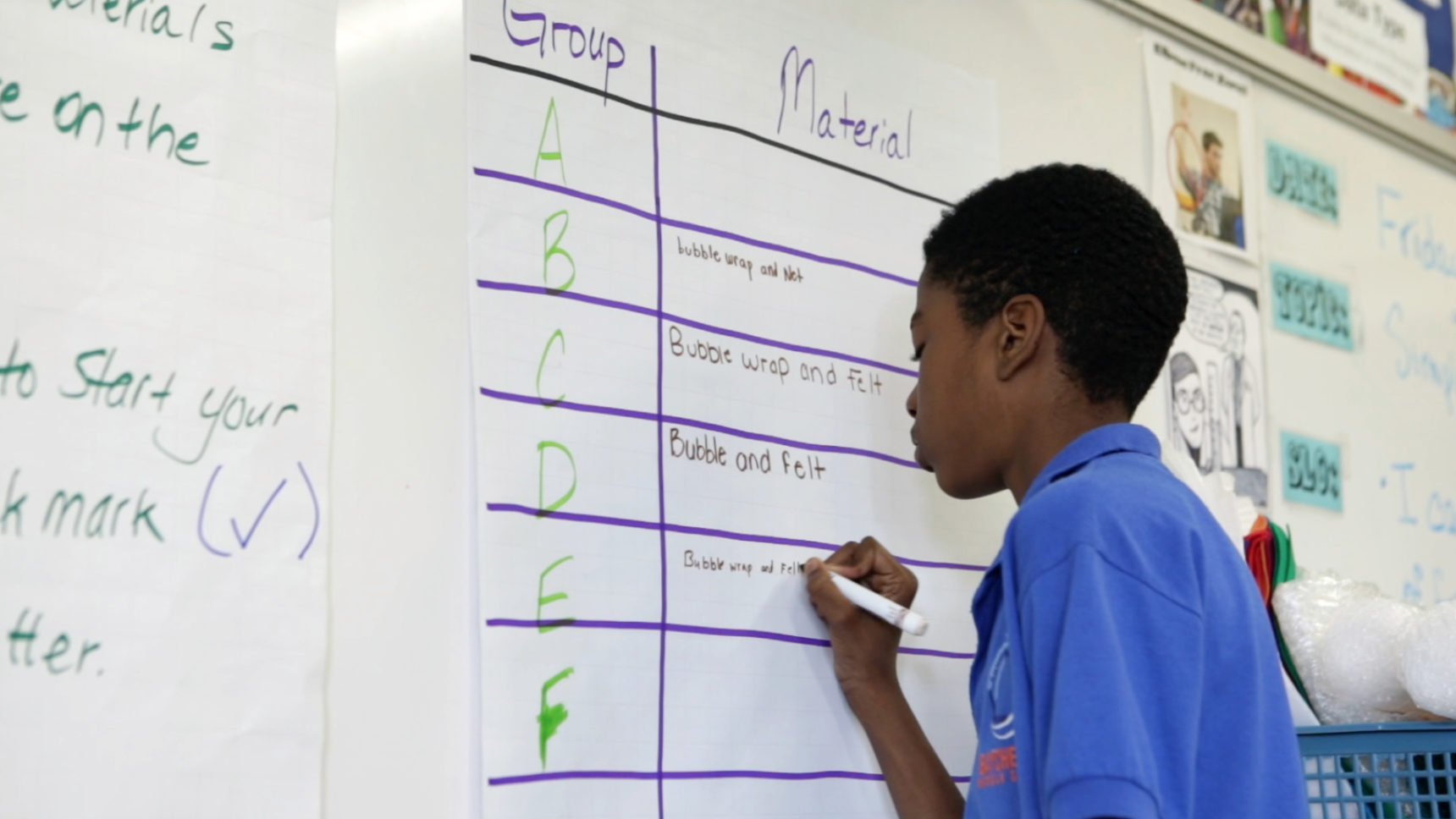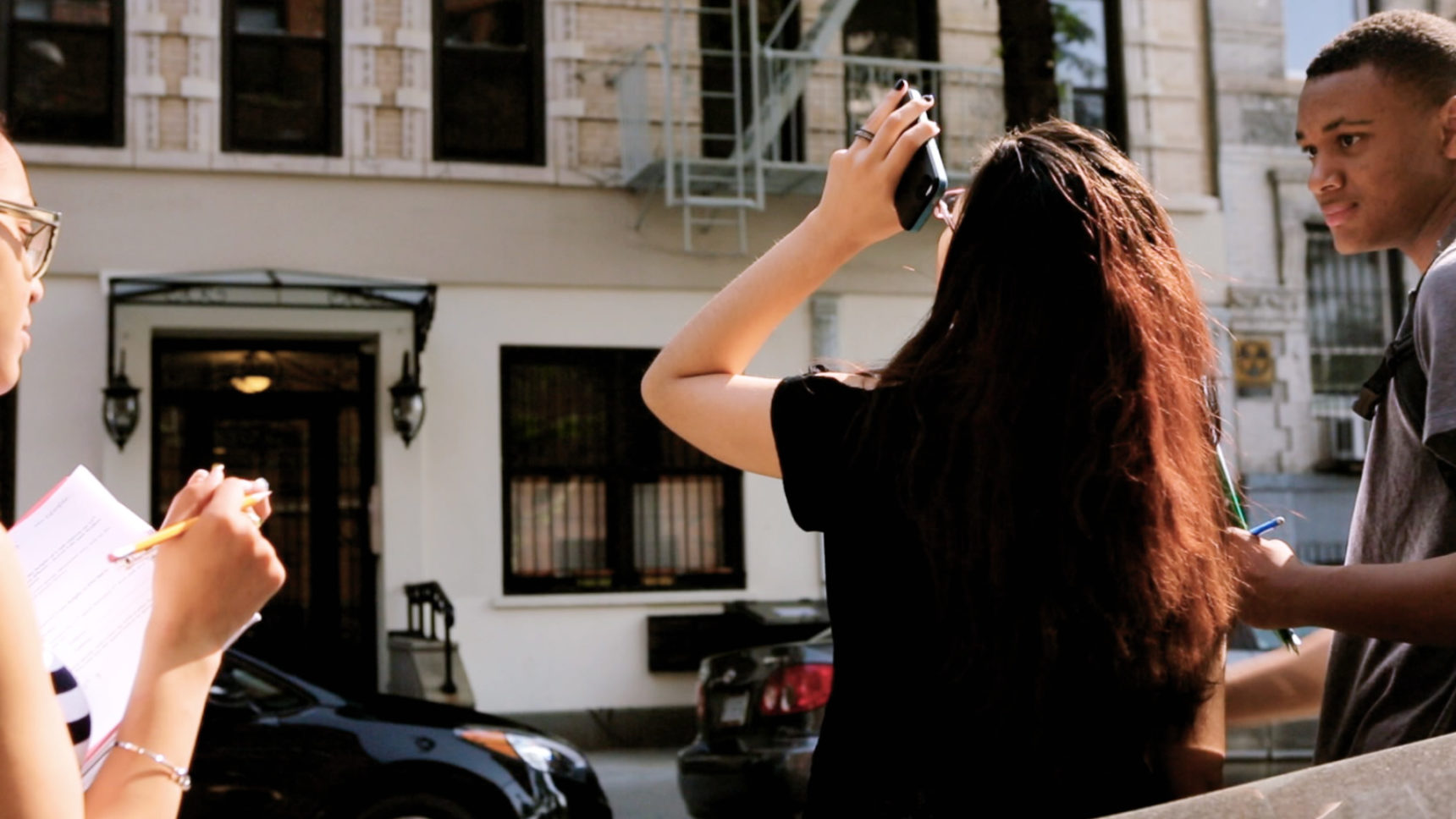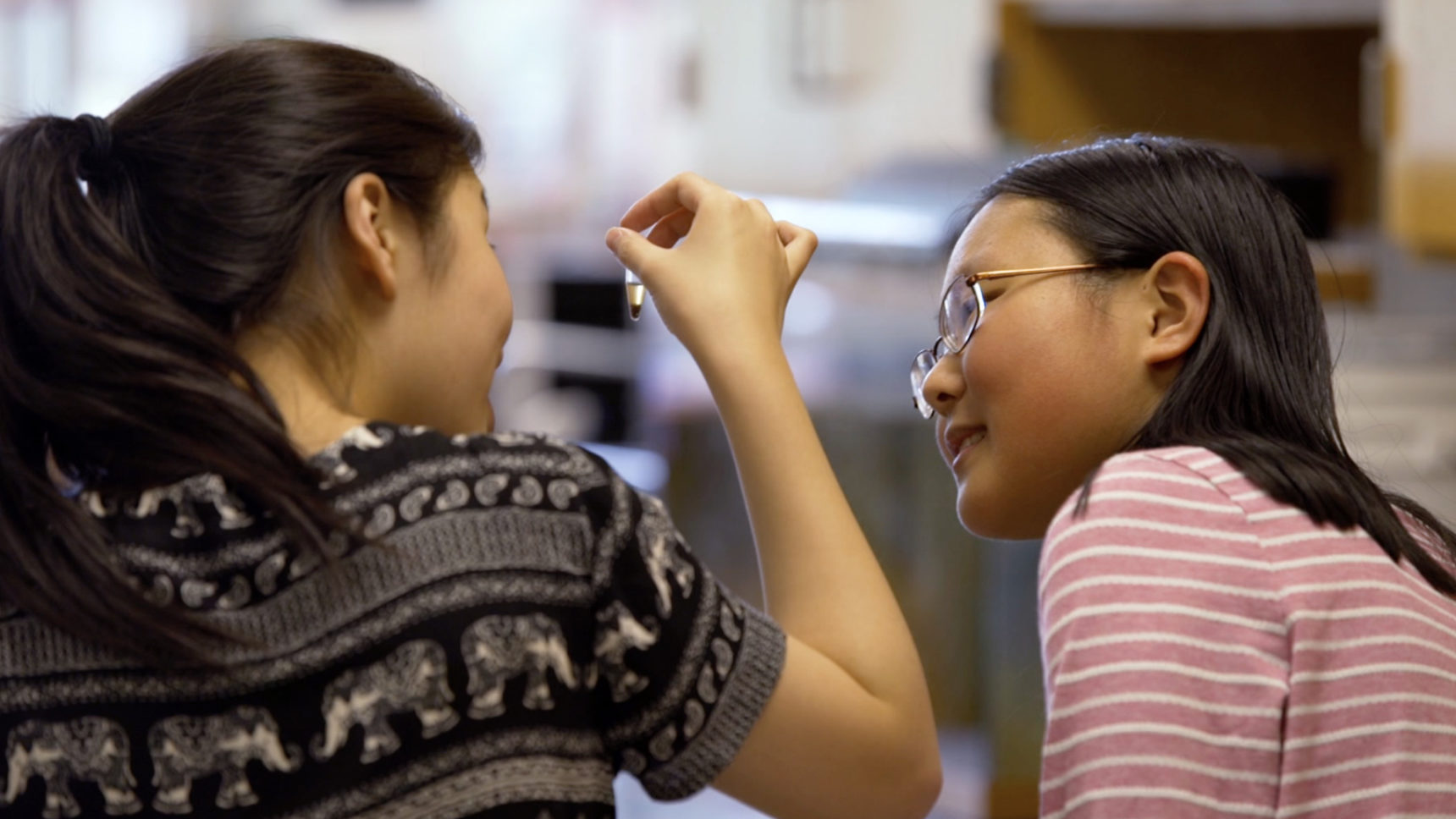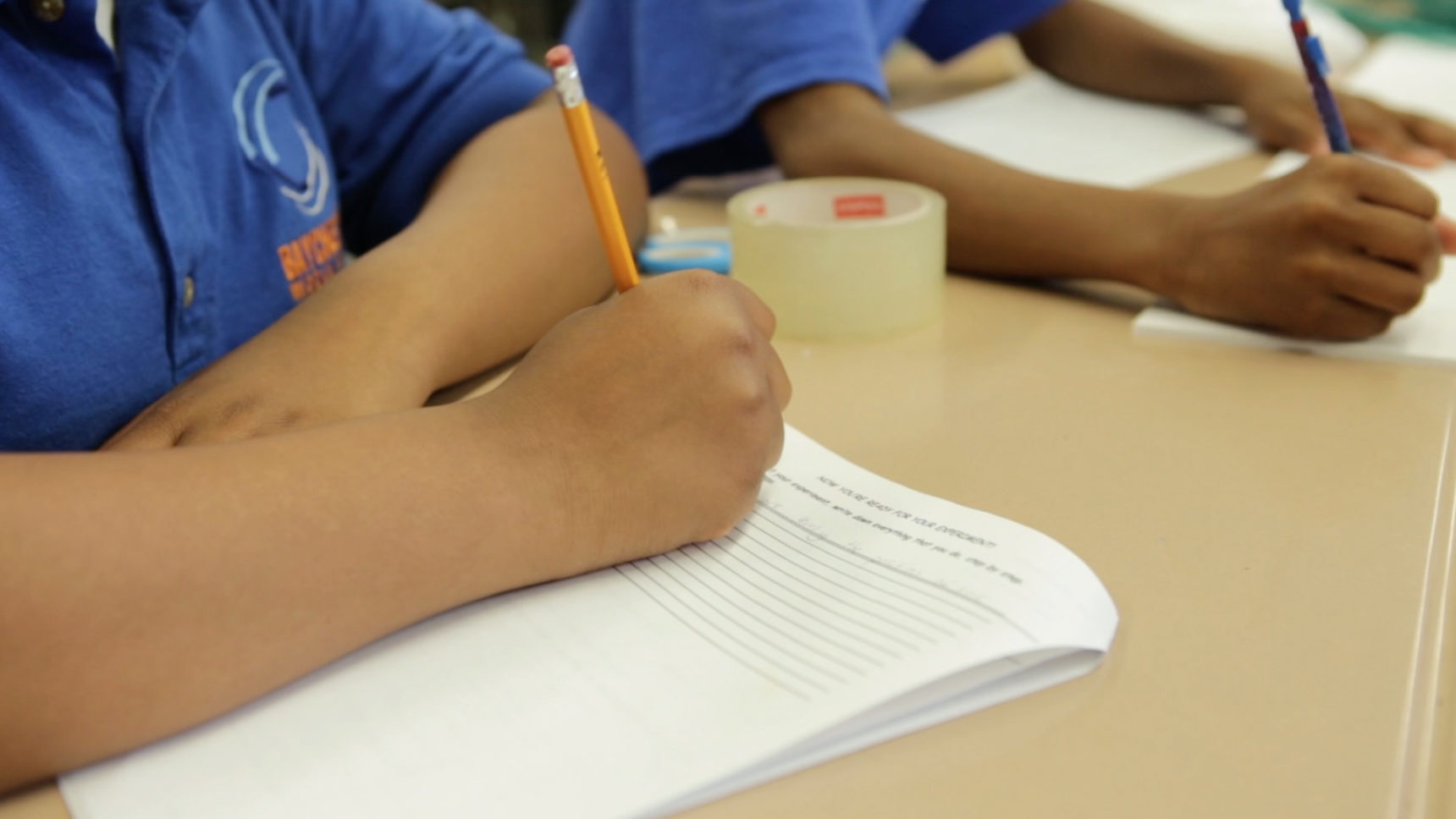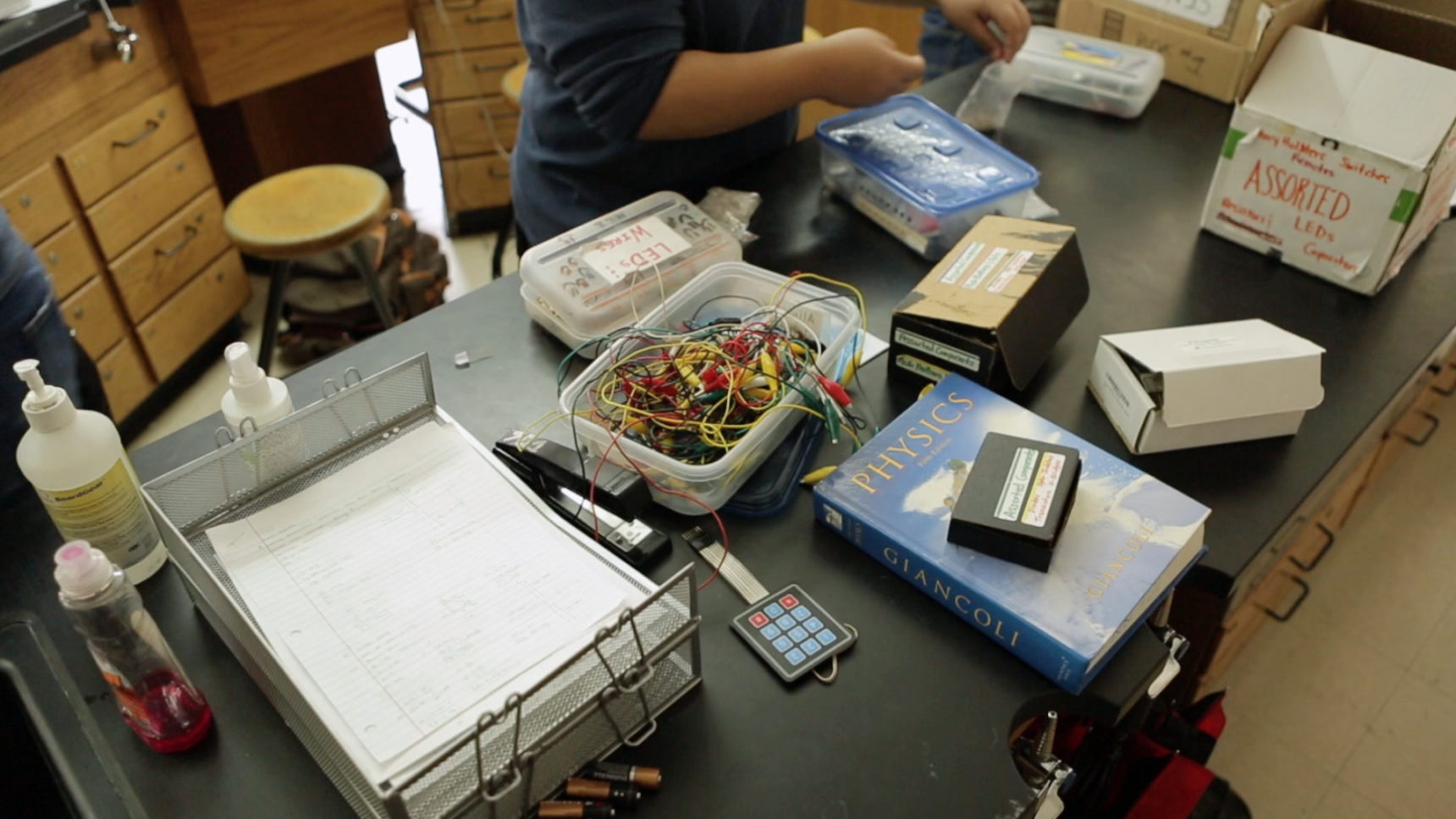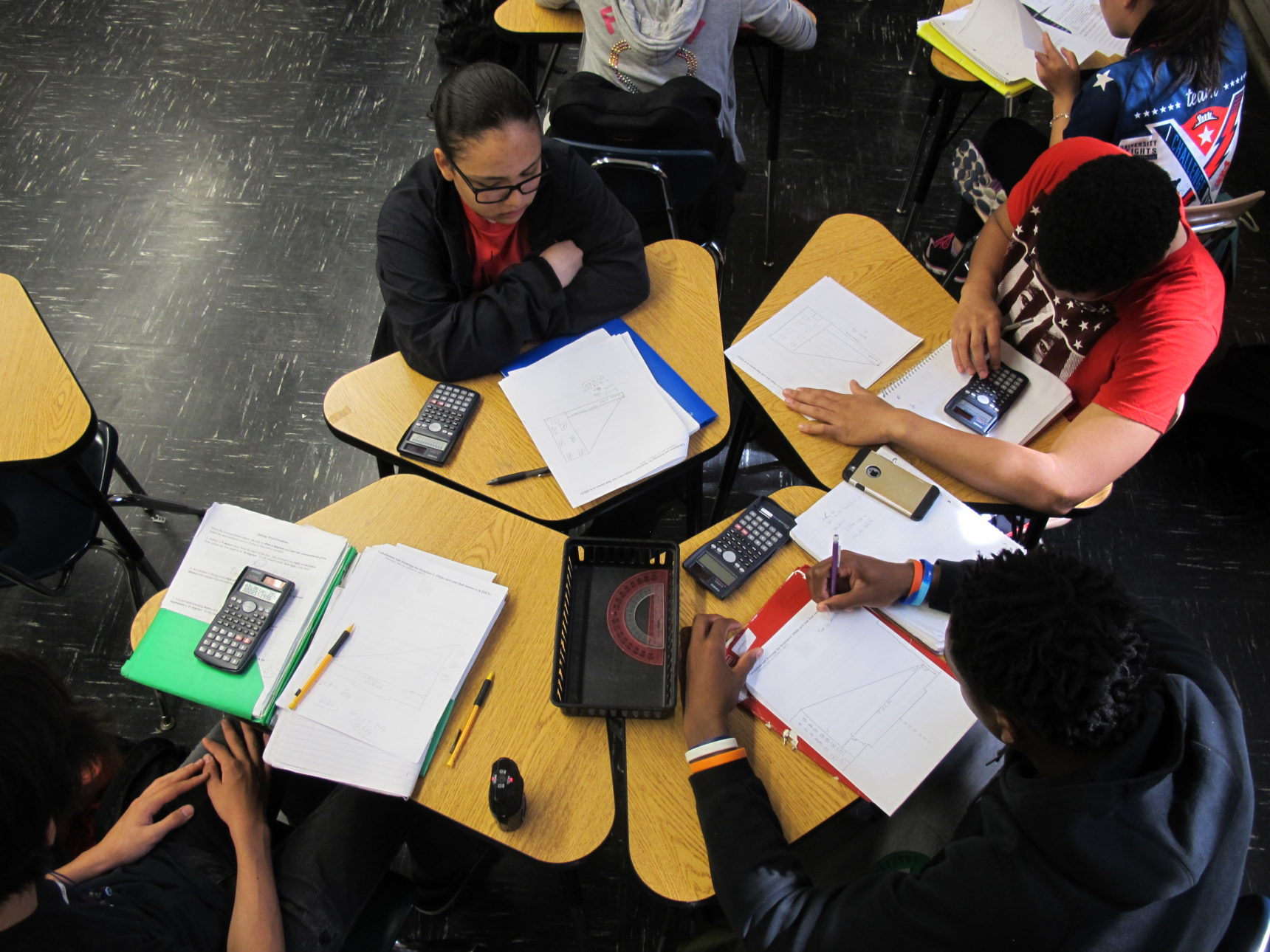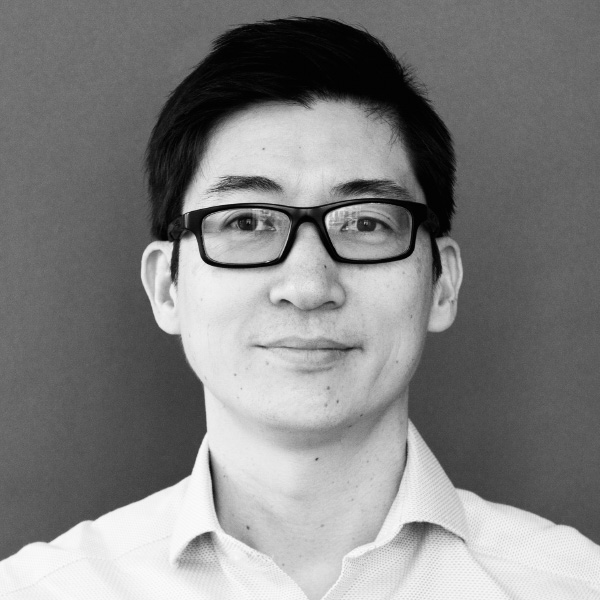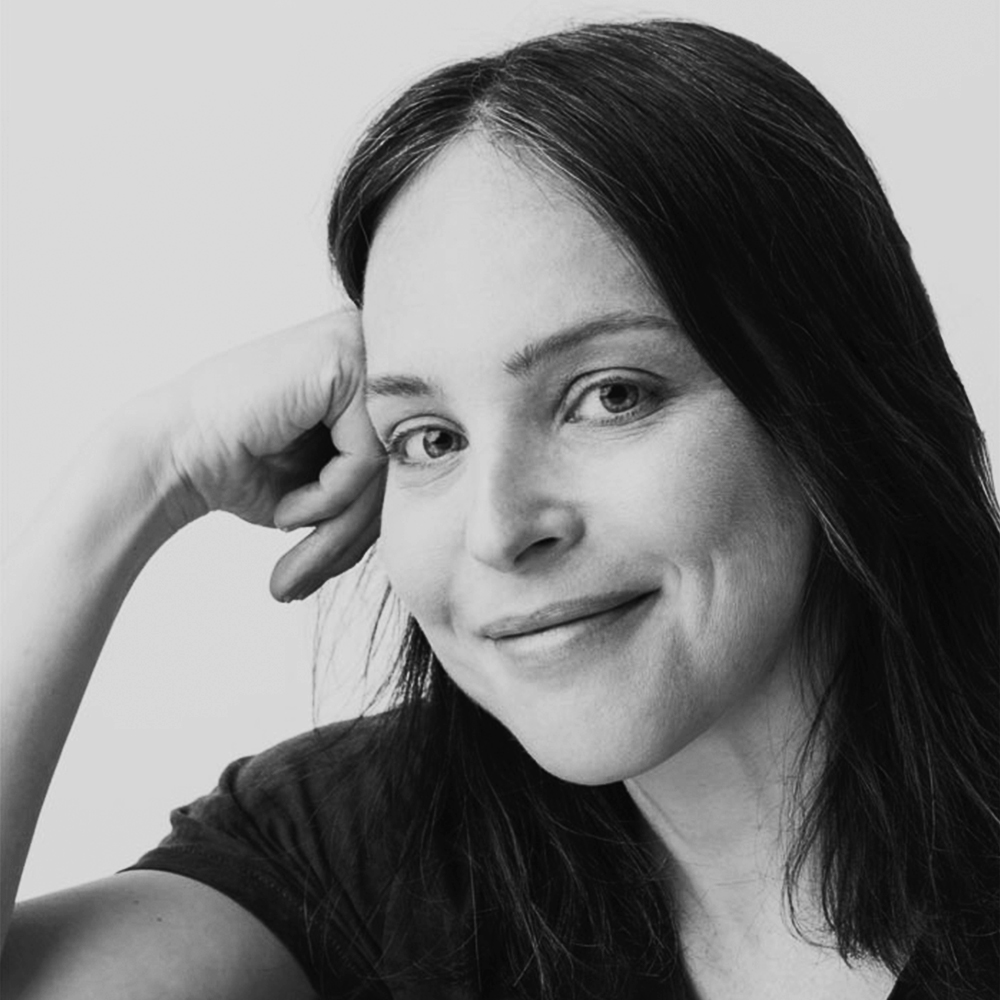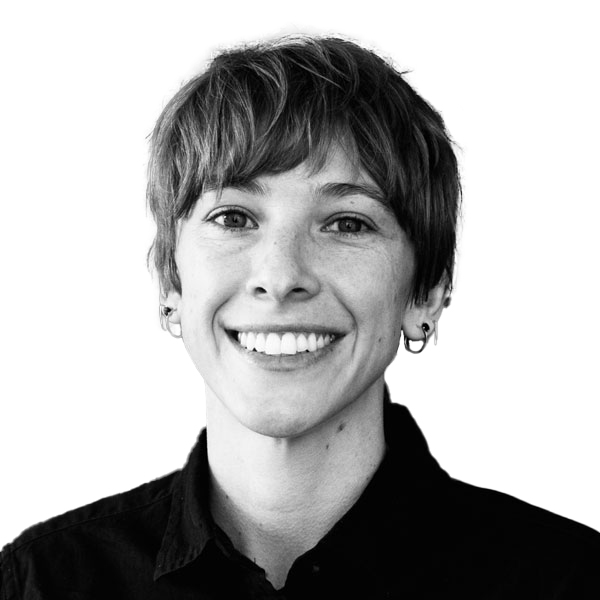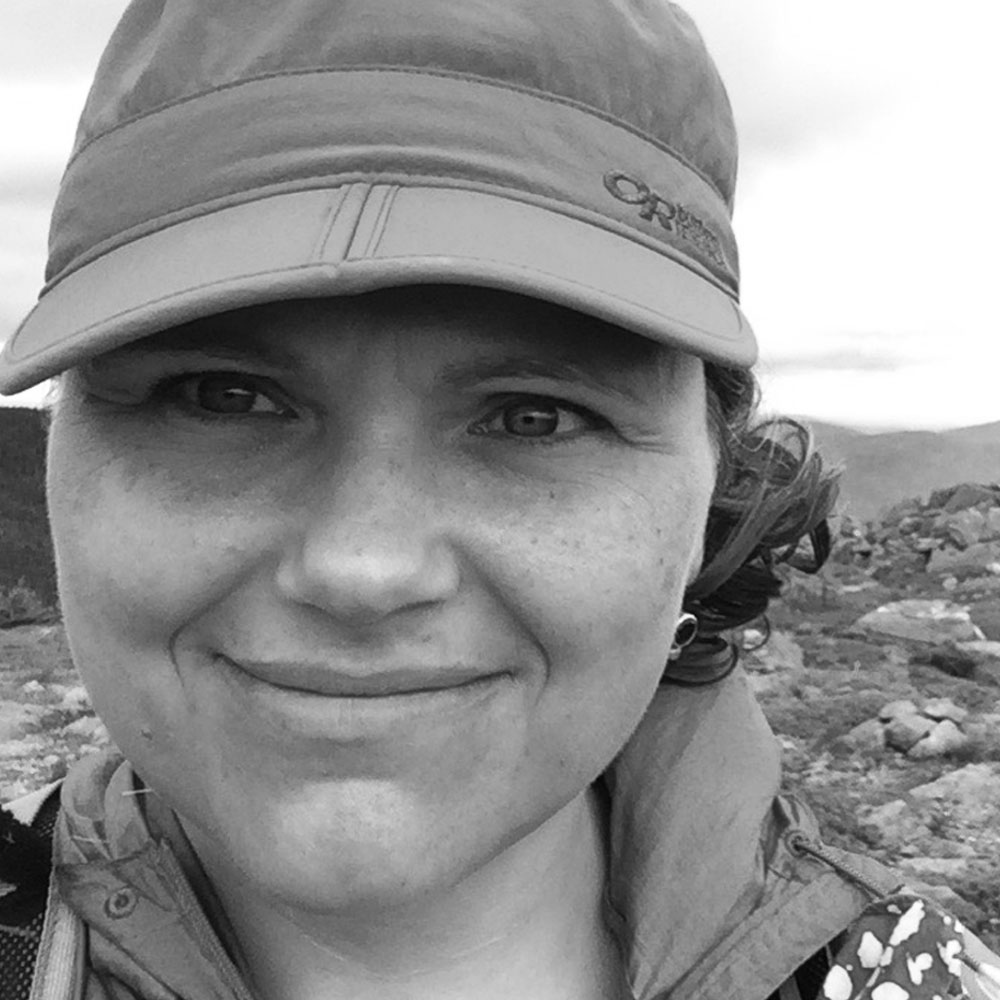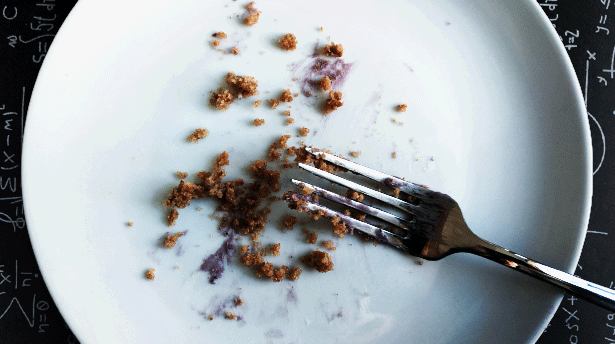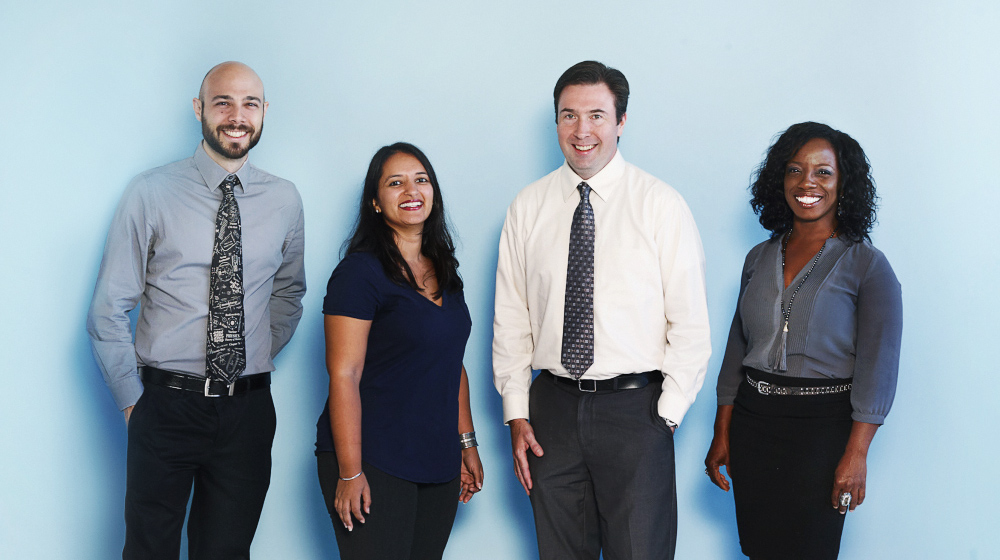
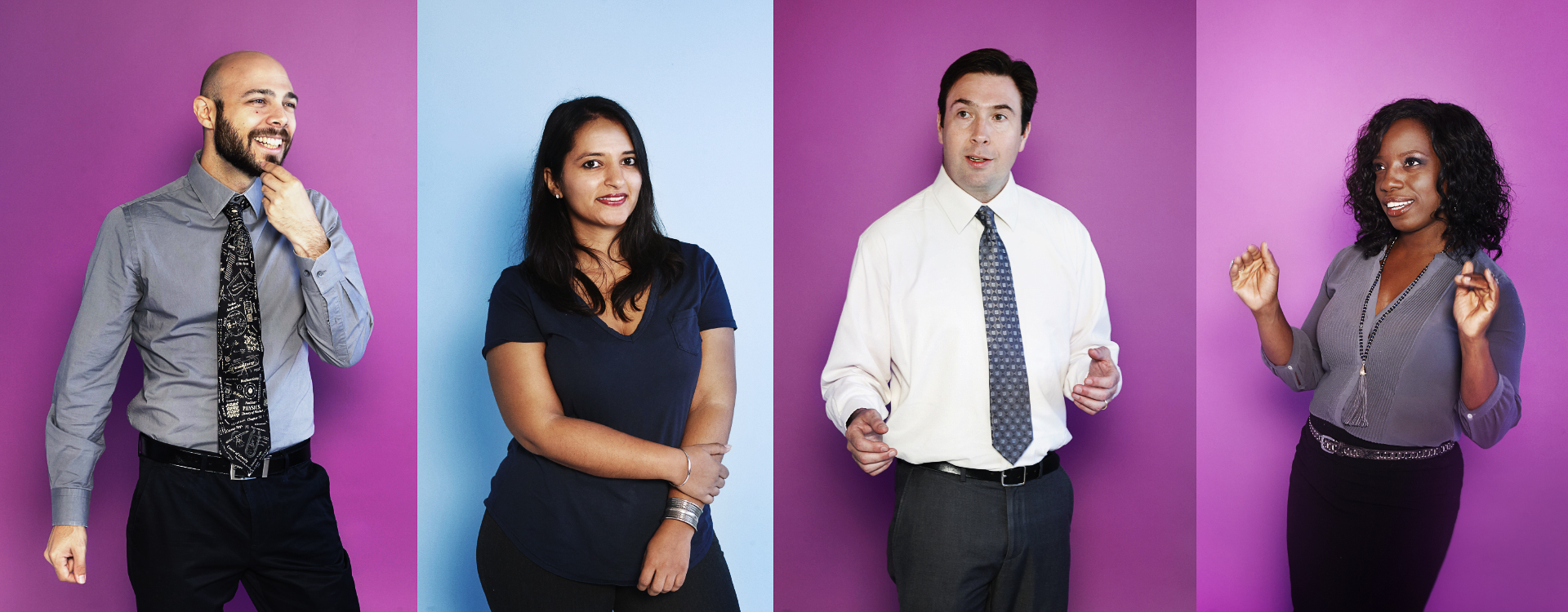
Kyoko Hamada for Quanta Magazine
Introduction
Time. Pencils down. As a nation, we’ve sweated over tests, dissected underperforming schools, gutted standards and curricula, and rinsed and repeated. We’ve thrown the classroom desk-chair at the problem and still earn no better than a C-minus when it comes to math and science literacy. No test is perfect, but according to the 2012 Program for International Student Assessment, 15-year-old Americans ranked 27th in math and 20th in science out of 34 member countries of the Organization for Economic Cooperation and Development. (December 6 update: In the 2015 assessment released today, the United States ranked 19th in science and 31st in math out of 35 OECD countries.)
The puzzle persists in a superposition of states: Are standards too low or — provocatively — too high? How do we adequately and equitably fund schools? Are we teaching the right stuff, in the right order? Or is it more about the process of inquiry? Do standardized tests help anyone besides the testing industry? Are traditional classrooms conducive to learning? Should we add technology or subtract it?
These issues demand attention. But one variable that’s too often lost amid public hand wringing over test scores and new standards is arguably the most vital: the fallible humans charged with imparting an appetite and appreciation for learning. To shine a spotlight on this linchpin of America’s byzantine education system, Quanta Magazine followed four master science and math teachers into their classrooms. Here are their stories.
TRY
Early in the morning on Monday, May 23, the uptown 5 train lurches skyward from its subterranean shaft, rising into the light of the Bronx. The cars groan as they lumber over elevated tracks high above the avenues, bodegas and detached homes, alongside treetops and the Escher-esque maze of rusty low-rise fire escapes. Twelve stops later, just shy of the end of the line, the few remaining riders wander out onto Baychester Avenue. Up the hill sits a squat, checker-patterned building with a triangle-wave marquee that is home to Baychester Middle School.
The bell blares. Upstairs in the “Cornell University” homeroom, so named to get kids thinking early and often about college, Channa Comer addresses her students with a big voice and an even bigger Cheshire cat smile: “Cornell, 10 seconds to take out your homework, 10, 9, 8 … ” The students scramble, rifling through their backpacks, until they are all seated at their desks with their notebooks in front of them. They all wear blue school-issued shirts with big white letters across their backs. Over the course of the year, they earn shirts with letters that spell TRUST, TRAIN or THANK. Today the shirts say TRY.
All around them are reminders to try, including posters that advise: “Life is complicated: Let’s deal with it,” and “Think like a proton and be positive.” In front of the classroom, printed above a whiteboard with the day’s schedule, are vocabulary words like “parameter,” “syntax” and “data type,” along with their definitions. A shelf at the back of the room holds clear containers packed with pine cones and shells. Below are containers for compost, soil, plants, rocks, starfish and safety goggles.

Science Evolves. Will Science Education?
Standing 5 feet 1 in two-inch-high platform sandals, Comer projects an outsize presence. Her voice easily fills the room, but she rarely raises it, except to let loose a mammoth laugh or to sing the praises of a student — today it’s Shawnay — who got 100 on her scorecard for good behavior. Comer has an athletic build that comes from years of martial arts and marathon training, not to mention amateur competitive bodybuilding, activities that have taken a toll on her now bandaged 40-something-year-old knees. A naturally inquisitive serial career changer, Comer took advanced biology courses as a nursing student, studied some physics and engineering for a job coordinating the construction of group homes, and, after becoming a teacher, spent several summer vacations conducting scientific field research.
“There’s nothing that has no relationship to science,” Comer said after the class. “It’s very important to me that students know how the world around them functions.”
But learning science is like learning another language, she said, and only 10 percent of Baychester’s students read English at or above grade level. Complicating matters, elementary school teachers vary widely in their interest or ability to teach science. By the time kids arrive in Comer’s sixth-grade class, some have had virtually no science, some have only read textbooks, while others have been doing full-on experiments. Even at the middle school level, she said, “science is not a priority because of testing. The high stakes of math and [language arts], that’s what kids get promoted based on and what teachers get rated based on.”
Complicating matters further, the school sits opposite the borough’s largest public housing complex, with 42 buildings, 2,000 apartments and a history of gang violence.
Comer uses anything and everything, including videos, songs (she has students clap and chant: “S-C-I-E-N-C-E, scientists is what we’ll be! Solve. Create. Investigate. Evaluate. Notice. Classify. Experiment!”), kinesthetic learning (on this morning, she calls students up to act out how molecules behave), physical models (students roll little balls of Play-Doh to model molecular characteristics) and analytical reading to “ensure that every kid gets some point of access based on their level.” Throughout her lessons she interrogates students with reflexive urgency: “What’s your evidence? I need to know,” followed by the kicker, “How do you know?” Then come hands-on experiments to reinforce meaning and evoke wonder.
But when she started her teaching career in 2007, at a small Bronx high school called Urban Assembly Academy of History and Citizenship for Young Men that has since closed, on many an evening Comer curled into a fetal position on her bed, crying. “I was jumping through hoops, standing on my head, trying to get kids interested,” she said. “Every day I get home and I felt like I just did battle.” She remembers starting a unit on the human body, thinking, “Everyone wants to know about their bodies.” She was blindsided when a student said, “Ah, miss, I don’t care how it works as long as it works.” She knew she needed to drop to a lower grade where she could get kids excited about science.
At the sixth-grade level, Comer said, “I’m not concerned that students remember everything or can regurgitate information. I feel that if they really have a level of engagement, they’ll learn all the nuts and bolts.”
After four years at the high school level, Comer became the founding sixth-grade science teacher at Baychester. Shawn Mangar, the school’s founding principal, said that soon after Comer was hired, she showed up in a U-Haul loaded with science materials she had purchased over the years, eliciting an “Are you serious?” from security staff. And last year, she took the popular rap song that all the kids were singing — “Trap Queen” by Fetty Wap, about a guy teaching his girlfriend how to make crack cocaine — found the background music and organized a competition for students to rewrite the lyrics with science content. The winning students performed their remake — about the water cycle — at the Science Genius competition at Columbia University. Comer also started an after-school engineering club with funding from the SECME consortium of universities and later received a $2,500 Summer of Innovation grant from NASA to purchase supplies for it. “Those kinds of things she makes happen,” Mangar said.
Comer is also known for her dogged insistence that students solve their own problems. Too often, said Vice Principal Elizabeth Leebens, students “get the history of science rather than getting an opportunity to do it for themselves.” Still, Leebens was surprised when, after a group of science club students asked Comer for help with their ice-cream-making experiment, which had already failed seven sticky times, Comer told them, “Go back and check your process.” Off they went to the bathroom to dump the latest batch and start over.
“I call it productive struggle,” Comer said. “That’s where the growth happens.”
In meetings, Leebens said, Comer has “challenged me to stop doing the cognitive work for kids: ‘Let them do it themselves. They can do it; they can do it.’” For Comer, she added, it’s about “life lessons and also high expectations for kids in letting them see what they can do before the adult decides what they can do.”
With all the messages out there telling Baychester students what they can’t do, Comer will not give up on them, and she won’t let them give up on themselves. “These are my kids,” she said. “This is my community.”
STRUGGLE
On Wednesday, May 25, over at East Side Community High School, Soni Midha takes her 10th-grade geometry class out for a lesson on the streets of Manhattan — to measure the height of buildings around East 12th Street and First Avenue. The students face plenty of obstacles: piles of garbage, dog runners, cyclists, construction, a heat wave, taxis and a catcalling gawker who earns a terse reprimand from the object of his attention. “Why you lookin’ at me?” says Nasifa, 17. “I’m a minor!”
Back in the classroom, the obstacles are more philosophical — thinking, figuring, calculating and coping with frustration — as the students tackle what is known at East Side as a “struggle problem.” Actual struggle — the experience of grappling with a problem — is a quintessential part of the learning process at this high school, where there’s a poster in every classroom citing the social reformer and abolitionist Frederick Douglass: “If there is no struggle, there is no progress.”
First, students face the challenge of contemplating the data they’d gathered. During their field work they had each taken on a role of observer or walker or recorder. The observer stood at point A, across the street from their chosen building (popular choices included a pizza shop and a macaroni-and-cheese restaurant). Using two iPhone apps, they measured the angle of elevation from point A to the top of the building and the distance the walker traveled from point A to point B, at the base of the building. These two measurements gave them crucial pieces of information about a right triangle, and from there — using what they’d learned so far in class about trigonometry — they are now charged with the task of calculating their building’s height. But first there are ponderous stares, frowns, diagrams drawn and redrawn amid plumes of eraser dust, and a collective buzz of puzzlement:
“I dunno, man. I really don’t know.”
“Help! Help!”
But they won’t get much help from their teacher.
“I’m the teacher who stopped giving them the answer,” said the 30-something Midha. “In every unit that we do, I warn them: ‘I’m going to give you the tools that you need, but I’m never going to tell you how to do something. You have to figure out how to do it, you have to figure out the answer, and you have to prove to me why you think that answer is what it is.’” She also offers reassurance through an oft-repeated mantra: “The only way that you can fail is if you give up. If you continue to persevere, if you continue to try, if you continue to work through this, you will get this. But if you give up, you will fail.”
Midha has always loved math — it came easily. She suffered some doubts about her abilities in 10th grade, thanks to an algebra teacher who did the standard “chalk and talk” at the blackboard. But during freshman year at Wesleyan University, she took calculus with a professor who considered mathematics to be an art. “Everything he said was so profound,” she recalled. “I was like, ‘Oh, my god. This is the coolest thing ever.’” And that was that. She became a math major — and also a music major; she plays classical guitar.
Midha decided to become a teacher while still in college, after giving lessons in music, math, Spanish and web design at a summer session for middle schoolers. She applied for the fast-track New York City Teaching Fellows program and got her start at a school in Brooklyn straight out of college, earning her master’s degree in teaching at the same time. She taught for four years, and then took a two-year detour, leaving the country and working in marketing and public relations at a fashion house in India. When she returned home, she realized she missed the kids. “Then I found East Side, and I was like, ‘This is it.’ This is a special place.”
East Side Community High School opened in 1992, part of the second wave of a movement of small alternative city high schools that dates to the 1970s. It is part of the New York Performance Standards Consortium, a group of 28 schools across the state that oppose one-size-fits-all standardized testing in favor of performance-based assessment.
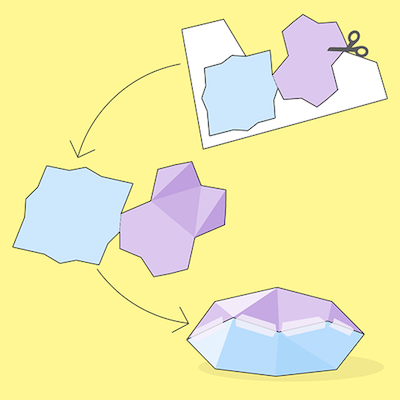
Share your early math and science learning experiences and explore other readers’ interactive survey results.
A recent case study on the school, titled “Learning by Heart,” describes East Side as a place that succeeds due to its combined priorities of academic rigor and personal relationships with students. Students came to appreciate just how special East Side was in 2012, when a custodian noticed that the school’s 90-year-old brick façade was detaching from its steel frame, requiring an emergency evacuation and a five-month relocation to an impersonal school with windowless classrooms that resembled a high-security bunker. At East Side, by contrast, there is a lot of love. “The teachers love our kids, the kids love us,” said Midha, who is like another parent for some students. The school serves grades six through 12 and draws a diverse mix of students, most of whom live on the Lower East Side. More than half of the student body is Hispanic and about a quarter is African-American; about a quarter receives special education. But 100 percent are governed by inquiry as the lever of learning.
On day two of the struggle problem, Midha, dressed in slacks and a T-shirt and New Balance runners that allow her to keep in perpetual motion, provides her students with only select pieces of information and instruction.
“I’m going to give you one hint for your struggle problem,” she says. “Here is the one hint I’m going to give you: The goal is to find the total height of the building. The full height. The total height.
“Remember: Where was the angle of elevation measured from? The eye. So when you are drawing and calculating, remember that. Your job is to calculate the total height of the building. … Remember: There is a reason we measured the eye height. There is a reason we measured the eye height.” Repetition, and more repetition, is key for penetrating the adolescent brain.
Midha also provides a bonus hint of sorts, pointing out to her students that they measured the eye height in inches and the building distance in miles, and that the worksheet asks for the height of the building in feet. With that, she leaves her students to their own devices —“Good luck!”
She circles the room, surveying the progress, asking simply: “Does it make any sense? … Why doesn’t it make any sense?” Despite her hints, the relevance of the eye height is proving elusive, and the inch-feet-miles conversions are confusing. She reiterates her tips one-on-one with the groups, and then lets them loose again, declaring: “I’m going to walk away now … ”
“Nooo, come back!” Fabian pleads, flipping his pencil in frustration and dinging himself in the eye.
Midha and her fellow East Side math teachers recently read 5 Practices for Orchestrating Productive Mathematics Discussions, by Margaret Schwan Smith and Mary Kay Stein. They dissected and discussed it chapter by chapter at their Friday meetings. “It’s about the idea of increasing rigor, increasing the ratio, and the conversations that you have with kids,” Midha said. The “ratio” refers to the amount of discovery and learning the students do on their own versus the amount of explicit play-by-play instruction they receive from the teacher. “Basically, it’s the thinking ratio,” Midha said. “The kids need to be doing the thinking, not the teacher.”
Inspiring kids to think, battling their inclination toward intellectual inertia, requires finely tuned orchestration. The book’s five practices consist of anticipating how students will try to solve problems, monitoring their work as they struggle and progress, selecting various students’ approaches to share with the class, sequencing the shared ideas in a logical way, and connecting it all to the overall goals of the curriculum. As Midha did the rounds from one group to the next, these factors were clearly in play — she gently and deliberately coaxed along the conversations, nudging the kids toward a breakthrough, where it all, finally, made sense. “It is pretty powerful when they do have that aha moment,” she said.
“It’s kind of like, not a weight off of my shoulders, but a weight off of my shoulders in my head,” said Savannah, 16, who used to hate math. “Suddenly it’s like you took a medication or something, you relax and the struggle’s gone and you realize the truth — you realize the truth behind the struggle.”
FAIL

Share your early math and science learning experiences and explore other readers’ interactive survey results.
On Friday, May 27, in an affluent suburb west of Boston, Aaron Mathieu introduces a lab experiment to his advanced placement biology students at Acton-Boxborough Regional High School. Mathieu, 42, has a boyish appearance and a voice that sounds alternately serious and laid back. His students scatter into groups, chatting boisterously. Mathieu reins them in with a reminder to prep their test tubes. Then he relaxes, calling the students cherubs, an affectionate term he picked up from his high school physics teacher. (He likes it because, unlike “guys,” it “offends everyone equally,” he said.) Later that day, in another class, he recollects puns about a recent career field trip to learn what eye doctors do (“the visit was very eye-opening”). His students poke fun at their teacher, calling him a nerd.
Six years ago, Mathieu decided to try a risky project in his honors biology class. The students would collect bugs from the school’s grounds, grind them up and extract DNA. Then they would try to isolate DNA from a specific type of bacteria living inside the insects’ reproductive tracts.
The experiment was complex, and Mathieu and two fellow teachers had spent a couple of years mulling it over and trying to decide whether to attempt it. They were drawn to the project because it combined molecular biology concepts and techniques with the real practice of science. If the experiment was successful, the students had the potential to make novel discoveries — to identify new species carrying that particular microbe, known as Wolbachia pipientis, and to uncover new strains of the bacteria. But the project could turn out to be a spectacular failure. “We were worried about how we would feel as teachers and how the students would feel if they spent five days doing all these novel experimental steps” — extracting DNA, copying sequences, separating them and visualizing the data — only to look down and see nothing, Mathieu said.
Most of the existing lab projects in the biology curriculum were designed like a recipe in a beginner’s cookbook — with predictable results that almost always came out as planned. But Mathieu wanted to expose his students to the true nature of science — its sense of exploration, the highs of discovery and the challenges of failure. To do that, he knew that he had to remove the safety net. “In order to innovate, we have to take risks and put kids into situations where they take risks,” he said. Spending a week on a lab that doesn’t work risks squandering limited time and other resources and discouraging the students. “We realized that everyone, teachers and students alike, would learn a lot by attempting the project, even if we did not successfully generate any data,” Mathieu said. “To me, the only waste of time is if the students didn’t learn from the experience.”
The first attempt at the Wolbachia lab ended just as Mathieu and his colleagues had feared — after a week of pipetting, centrifuging and careful note taking, all but one group of students had a blank gel. The students were distraught, focusing only on their missteps and the lack of a clear answer when the project was complete. Mathieu, however, used that response to shape his teaching philosophy. “I took that as a sign they are not learning enough about the process of science,” he said. “It meant we needed to embed the process of science throughout the curriculum.”
Mathieu spent time dissecting the lab with the students, trying to figure out where they had gone wrong. He realized that the students lacked a deep understanding of experimental controls, which help scientists isolate the variable responsible for the outcome. In this experiment, the control was some premade DNA from molecular biology kits. The students amplified DNA both from the insects and from the kit. It turned out that the amplification process failed for both the insect and the control DNA, suggesting that that was the source of the problem. Mathieu and his students improved their process, which now works better, but still not perfectly. “One class this year had amazing data and one class had almost nothing,” Mathieu said.
Now, six years later, the process of science has become an essential part of Mathieu’s teaching. Several classes of students have performed the insect lab with successful results. But perhaps more importantly, they are better able to analyze the outcome if it goes wrong. Mathieu and his students discuss the importance of controls and other aspects of experimental design throughout the year, and the students now design their own experiments. They have tested whether mice prefer peanut butter or Nutella. (The mice are ambivalent toward Nutella.) They’ve burned their lawns to explore whether grasslands grow better after fire. (With parental supervision, of course.) They’ve analyzed how plants respond to aluminum, nickel and lead. “Students need to ask questions, to make choices,” Mathieu said. “They need to have some degree of choice and control if they are actually doing science.”
“Aaron’s goal is for his students to do real science in the classroom, not conducting simulations or doing labs that have known answers,” said Brian Dempsey, a colleague at Acton-Boxborough who administers the National Association of Biology Teachers’ Outstanding Biology Teacher Award in Massachusetts, which Mathieu won last year.
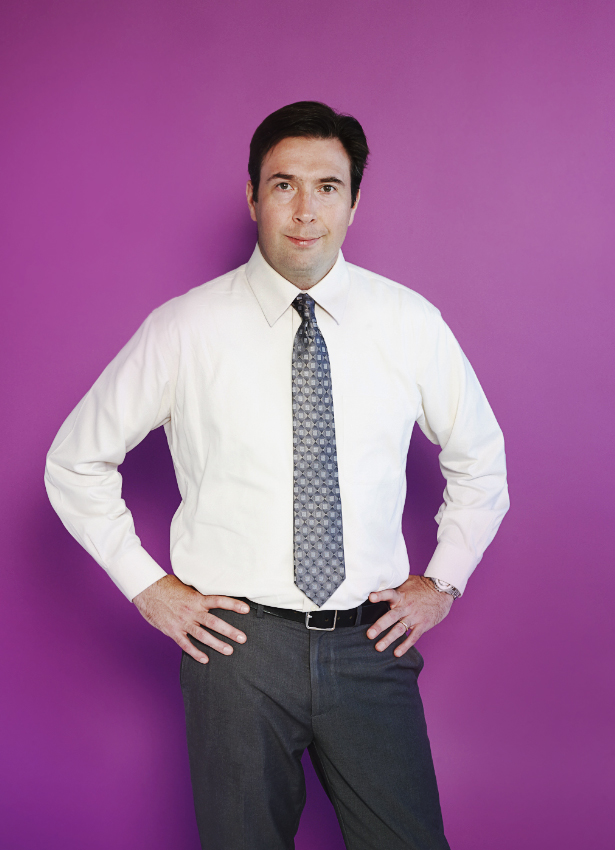
Aaron Mathieu
Kyoko Hamada for Quanta Magazine
Mathieu, a 20-year teaching veteran, experienced an epiphany after getting his national board certification 10 years ago. As he reflected on his first decade of teaching, he realized he spent a lot of time on the technique of teaching, such as figuring out how to present material. “I didn’t really think of myself as a biology teacher but more as a teacher,” he said. “But I started to wonder how much science was I teaching. Was I presenting the process of science and the nature of science, or was I presenting the history of science? Was I reinforcing the idea that science is a bunch of facts in a book?” Soon after, Mathieu, Dempsey and another teacher began brainstorming how to bring more of the experience of science into their classrooms, a process that culminated in the insect lab.
An essential ingredient in teaching the process of science, particularly for freshmen, Mathieu said, is helping students learn how to handle setbacks. He recalls how one honors student would cringe at her biology grades. “That’s a hard emotion to see,” he said. “Not everyone is in a social and emotional place to struggle and learn to deal with the setbacks.”
To work past the cringing, he cultivates relationships with the students. As a class, they discuss past challenges and defeats, and what it means to struggle on a test or in a lab. He reaches out to students in different ways, talking with them after class or engaging in discussions via email. He might note that a particular student is struggling with a specific concept and ask if the student wants to sit down and talk about it. He also engages with students on topics other than science. “Whenever possible, I try to have informal face-to-face conversations with students,” he said. “If a group has finished early, maybe they start talking about a game or some other event — I’ll get involved in that conversation.”
As a result, the students have learned to deal with an experiment that flops, and to understand that in science, failure is far from a dead end — it’s a result in itself. “At the end of two weeks, we might look at a gel and see nothing, and that’s ok, because that’s what happens in science,” Mathieu said. Instead of thinking that the experiment was a waste of time, they’ll try to figure out what went wrong. Which part of the experiment failed? How can they improve it next time? Some students are so driven to figure out what happened that they come back after class to redo the experiment.
ENGAGE
Earlier that same Friday, two men are shot in a car just steps from Baychester Middle School. Both are taken to nearby Jacobi Medical Center, where one dies. A crime scene unit seals off Baychester Avenue.
The school day begins as usual. After lunch, students from the “UC San Diego” homeroom arrive in Comer’s classroom for science. “Good afternoon, San Diego,” she says, beaming.
“Good afternoon, Miss Comer!”
“We’re going to be continuing with our toy car labs,” Comer announces. A highlight of her simple-machines unit, the lab involves building a ramp and testing how fast a toy car rolls down when the ramp is covered with different materials. “What’s the concept that we’re studying with the toy car lab?”
Mylani raises her hand. “Friction.”
“What is friction?” Comer asks. A few students offer partial answers. “We said it was a force, we said it has to do with surfaces, it has to do with slowing things down. Who can put it all together into one neat package?” After another try, she calls on Cameron, a soft-spoken boy who didn’t get along with her at first but is now one of her top students.
“It’s a force between two surfaces that makes moving an object easy or difficult,” Cameron says.
Soon students are buzzing in groups, defining roles and deciding which coverings to put on their ramps. As Comer monitors their progress, she probes individual students to gauge understanding. “Why is the speed of the car the dependent variable?” Two of Cameron’s teammates correctly explain that it depends on the covering on the ramp. Then: “What’s the independent variable?”
“The covering on the ramp,” Sincere answers. He and another boy sport Baychester blue headbands with orange letters that spell TRAIN.
“What is the control in your experiment?” Comer asks. This stumps the group. “Well, what is a control?” she prods. Blank stares. She decides to review these concepts with the entire class.
When she’s satisfied that everyone groks the basics, off the kids go to gather their materials and build their ramps. The classroom becomes a construction zone. Shawn Mangar, the principal, called Comer’s class the loudest at the school, but loud for the right reasons: Students are thinking and learning in “controlled intellectual chaos.”
And it works: “In the beginning of the year I wasn’t really interested in science because at my old school we didn’t do a lot of science,” Shomari said after class. But now, she said, “what I like about science is that you can experiment with different things and you can challenge other people’s opinions.”
Likewise, Cameron said that at his old school, “we just read textbooks and stuff.” He loves the hands-on projects and the fact that Comer goes “deeper into things.” Last winter, when there was ice on the ground, he thought about friction and where to place his feet to avoid slipping and falling. “I like the way that she teaches,” he said. “She never rushes. We just take our time.”
The school’s founders never planned for science to be a focal point at Baychester. “We never expected it to take off the way it did,” Mangar said, crediting Comer. “You can see a student struggling in two or three classes and all of a sudden they’re a rock star in science class.”
MODEL
“Real quick, everybody just come up to the table real quick,” Michael Zitolo instructs his Physics 1 class on Thursday, May 12, at School of the Future, a public middle and high school that rises 11 stories above the base of midtown Manhattan. “Can I have you come around this way? Danny, you’re going to want to come a bit closer. I showered; I don’t smell too much.”
The students gather around their teacher. Bald and bearded and, as always, wearing a science-themed tie, Zitolo sends two windup toys, a car and a duck, whirring across the tabletop.
“When you wind up one of these windup toys, does anybody know what’s on the inside of these things?” he asks.
“A spring!”
“It could either be a spring, or some sort of elastic rubber band material,” Zitolo says, explaining that either of these can store potential energy that gets unleashed as kinetic energy when the duck walks.
It is the first day of a monthlong unit on energy that Zitolo has carefully curated. The students mull over demonstrations, thought experiments and video clips to familiarize themselves with the way energy transforms from one type to another, and then they practice graphing those changes in a series of bar charts.
“Quick disclaimer — do engineers actually use these bar charts in their analyses? No,” Zitolo says. “They do this in their head, because they have a deep understanding of how energy transformations occur. We’re doing these on paper for now until we get comfortable doing these things in our head. And then these are actually going to be our launching point to create our mathematical models.”
This evening, the students will write a one-page “mastery reflection” on using bar charts to model energy transformation. And through further experimentation in the weeks that follow, they will develop mathematical abstractions or “models” that describe energy’s behavior, essentially deriving for themselves the equations that most physics students memorize from textbooks. Called “modeling instruction,” it’s a pedagogical approach that is surging in popularity among physics teachers. Modeling instruction won the 2014 Excellence in Physics Education Award from the American Physical Society and has been shown to yield higher scores than traditional courses on the force concept inventory, a test that gauges students’ conceptual understanding.
But Zitolo did not always teach this way. When he first entered the profession — and his seventh-floor classroom at School of the Future — almost 10 years ago, he felt as though he was drowning in a sea of concepts. He was somehow supposed to instill a thorough knowledge of forces, kinematics, energy, electricity, magnetism, waves, modern physics and more in students whose prior notion of physics consisted of the word “gravity.” He couldn’t keep up. And the students who passed through his class rarely went on to study science or engineering in college.
Meticulous about everything from beard trimming to his annual go-for-broke Halloween costumes (which earn him schoolwide respect), Zitolo was obsessed with self-improvement. “I was of this mind that there is a perfect way to teach physics, and I just have to figure out what that perfect way is,” he said. “I was very hard on myself my first couple of years. I literally, one year to the next, could not look back to what I did in previous years, I thought it was so horrible.”
The biggest breakthrough came the summer before Zitolo’s fifth year of teaching, when he attended a three-week workshop on modeling instruction. Mark Schober, a physics teacher and former president of the American Modeling Teachers Association, called modeling “a grassroots movement” that grew in the 1980s largely out of the classroom practices of an Arizona physics teacher named Malcolm Wells. The movement has expanded to 78 workshops this past summer; as of 2015, more than 10 percent of the nation’s physics teachers had attended one. In modeling courses, instead of first teaching physics concepts in the abstract and then connecting them to the real world through labs, teachers have students experiment with model systems — a windup toy, for instance, or a cart held by a pulley at the top of a ramp — and guide them as they develop mathematical models of the systems, which they can then apply to other problems and settings. Modeling instruction is “a lot of Jedi mind tricks,” Schober said. “How do we shape students’ thinking without them knowing we are? We want them to feel the idea is really theirs — they came up with it.”
Modeling is not a one-size-fits-all teaching method, but is rather tailored by teachers to suit their individual styles and skills. Zitolo, who has an engineering bent, casts his modeling unit on energy as a project to design a roller coaster. In class on May 12, he asks students to imagine dropping a ball from the top of the school building. When the ball hits the ground, he explains, the friction converts some of the ball’s kinetic energy into thermal energy — a form they were supposed to have read about the night before. “Why does this matter?” Zitolo says. “Roller coasters. Even though the tracks are designed to be super smooth, and even though they are supposed to be streamlined to reduce drag, there is going to be drag; there is going to be friction. You guys are going to have to account for that when you design your roller coasters.”

Michael Zitolo
Kyoko Hamada for Quanta Magazine
Like East Side Community High School, School of the Future has opted out of the statewide Regents examinations, and this has facilitated Zitolo’s switch to modeling. Student-run experiments and data analyses take longer than lecturing, and so modeling courses typically cover less ground than a traditional physics curriculum. But Zitolo has found that, compared to skimming a sea of concepts, deeper dives instill a deeper appreciation for physics — even in students who are destined for other vocations.
“I’m going for public communications, not anything to do with physics,” said Nikki, who graduated in June and now attends Syracuse University. “But being in Z’s class — it really has opened my mind to, like, wow, this is cool, I get to build things, I get to see how things affect one another.”
Zitolo, now 32, made up his mind to become a physics teacher as a senior at New York University, even though his family, friends and mentors encouraged him to “do something real” with his physics degree first. Teaching “gives me the ability to be creative,” he said. He gets to share his passion for physics with students “and hopefully inspire that same passion in them.”
TRAIN
A week into his May unit on roller coasters, Zitolo and about a dozen other science teachers meet at a building on 21st and Broadway for pizza and an evening course led by Channa Comer. Comer and Zitolo have been friends for years, having participated in many of the same professional development (or “PD”) activities. After chatting with him and other participants about the rapid approach of summer, Comer launches into the benefits of using primary sources such as maps, original documents and diagrams in the science classroom to help engage students.
During the course, which is sponsored by Math for America, a nonprofit organization that aims to improve public math and science education by providing a comprehensive support system for teachers, the cohort brainstorms ways of integrating primary sources into their curricula. “Sometimes when I start a unit, I have them do research on, like, the physics of roller coasters,” Zitolo says to his tablemate, Bianca. “But maybe I could also kick them off with, like, a little bit of the history of roller coasters that I could provide, to see how they’ve evolved over time.” He begins to search the Library of Congress website.
When Comer decides to do something, she’s not one to just dip a toe. Years ago, at a bodybuilding show, she looked at the woman who won and thought, “I could do that.” So she did, training two to three hours a day, radically altering her diet, taking supplements like medium-chain triglycerides (to burn fat) and zinc (to increase blood flow and vascularity), tanning and practicing poses. “It’s a crazy lifestyle,” she said. “It costs so much and you can’t walk past a store without checking your muscles.”
She quit bodybuilding after four years out of concern for her metabolism, pocketbook and humility. Now she’s into yoga and belly dancing, both of which she’s certified to teach. When she became a science teacher nine years ago, she threw herself into the work just as she does with everything else. She trained hard over weekends and summers, partly for the extra income — some fellowships offer generous stipends — but also to “build my own content knowledge, because I came into this with a scattering of science in different areas,” she said.
“She’s done more PD than any other teacher I know and is constantly integrating what she learns into her curriculum,” Zitolo said in an email.
Among her teacher friends, Comer said, “I’m known as a PD junkie.” During her first year as a teacher, she wanted to observe more accomplished teachers, but she and the other two science teachers at Urban Assembly Academy were all relatively inexperienced. So she convinced her principal to let her spend one day a month observing teachers at other schools. One month, she visited New Design High School on the Lower East Side to observe David Rothauser, a teacher known for giving students ambitious design challenges. “That’s when I started doing engineering design challenges and using ‘design thinking,’” she said. Design thinking involves figuring out “all the different ways we could solve a problem.” Many of her former high school students who didn’t go to college now work for the parks department, in restaurants or in retail. Without marketable skills like design thinking, she said, “those are the only things that are available to them. I think the whole system needs to be changed and the focus needs to be on thinking and not so much on facts.”
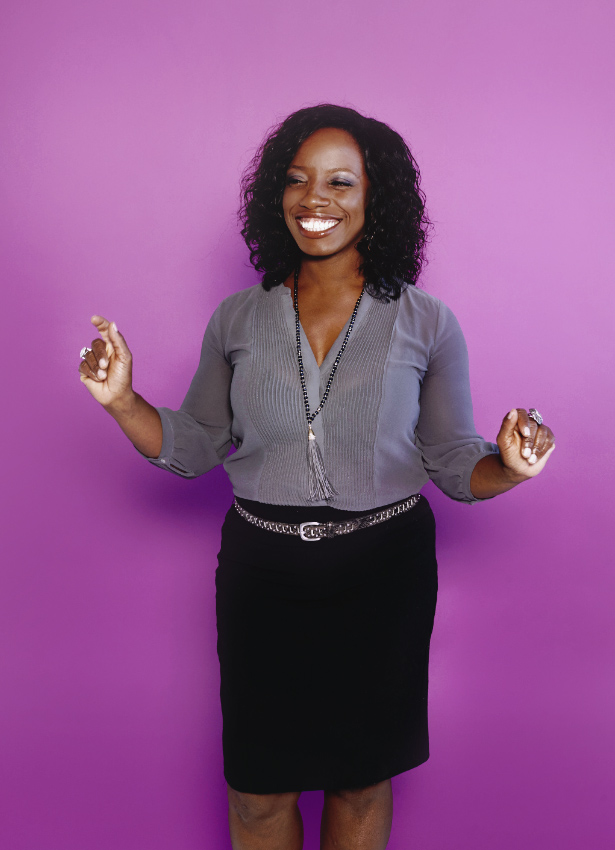
Channa Comer
Kyoko Hamada for Quanta Magazine
Rothauser said he was immediately impressed with Comer’s ability “to improvise within the system,” adding that “it felt wonderful to be discovered by her in that way.” Comer went on to become a master fellow in the Sci-Ed Innovators program he was helping to run, and later joined the leadership team.
Over the next several summers, Comer participated in teacher research programs in neuroscience, nanotechnology and robotics, took workshops in molecular biology at Cornell University, and participated in sea scallop surveys with the National Oceanic and Atmospheric Administration. Comer and Zitolo became fast friends during the Summer Research Program at Columbia, which she considers one of the best PD opportunities because it runs for two consecutive summers in the same laboratory, offers a generous stipend, involves collaboration with experts, and focuses on both research and pedagogy. The two have also participated together in the Smarter program at New York University’s Polytechnic School of Engineering, and they were Sci-Ed fellows the same year. All three of these extended programs provide training that goes well beyond what’s offered in the one-off workshops that many teachers attend. They also include “a mechanism for follow-up to assess implementation and effectiveness of the PD,” Comer said. “In my experience, the programs that I have participated in that fit these criteria have had the greatest impact on my teaching practice.” However, a paradigm shift in professional development will not come easily. “Teachers have been conditioned to expect PD where they walk away with something that they can use in their classroom immediately, rather than working through a process that may take some time to develop and yield results.”
In Acton, Massachusetts, Aaron Mathieu networks with scientists and other teachers, figuring out how to improve experiments, convincing researchers to donate agar plates or other materials for new projects, and arranging lab visits for students. Everyone Mathieu meets is fair game. He has recruited biologists he met at his sons’ elementary school picnics and soccer games to host career shadowing visits.
Mathieu works with Natalie Kuldell, an instructor at the Massachusetts Institute of Technology who runs the BioBuilder Educational Foundation, a nonprofit organization that teaches synthetic biology and runs summer workshops to train teachers in bioengineering. He’s also been in touch with Seth Bordenstein, an evolutionary biologist at Vanderbilt University who helped develop the insect DNA lab that Mathieu implemented five years ago.
Soni Midha’s approach to professional development is immersive, in part out of necessity. She teaches four classes and meets with a math coach and her fellow math teachers. “We geek out,” Midha said. They talk lesson plans and curriculum goals, and they often begin a meeting by doing a math problem themselves.
Broadly speaking, their goal is to reflect upon teaching and to improve. With that in mind, Midha and her colleagues read the book A Mathematician’s Lament, a landmark critique of the nightmarish state of mathematics education by Paul Lockhart, a math teacher at Saint Ann’s School in Brooklyn. Lockhart chronicles the standard rote approach, in which students are told, “‘The area of a triangle is equal to one-half its base times its height.’ Students are asked to memorize this formula and then ‘apply’ it over and over in the ‘exercises.’ Gone is the thrill, the joy, even the pain and frustration of the creative act.” Lockhart argues that mathematics should be taught as “an art for art’s sake”:
Mathematics is the purest of arts, as well as the most misunderstood.
… If there is anything like a unifying aesthetic principle in mathematics, it is this: simple is beautiful. Mathematicians enjoy thinking about the simplest possible things, and the simplest possible things are imaginary.
… That’s what math is — wondering, playing, amusing yourself with your imagination. …
… People enjoy fantasy, and that is just what mathematics can provide — a relief from daily life, an anodyne to the practical workaday world.
For Midha, the daily regime has her watching the clock, timing lessons down to the second. She arrives at school as early as 7:30 a.m. The final bell rings at 3:30 p.m. She has a 50-minute lunch period, which she often spends meeting with students or keeping up with work. She tries not to take her grading home, but she often does.
Sometimes she gives over her spare time to professional development. A few years ago she took a Math for America workshop led by the Stony Brook mathematical artist and educator George Hart. He entranced a classroom of teachers with what he calls a sculptural “barn raising” — the collaborative construction of a giant starlike polyhedral sculpture suspended from the ceiling. The sculpture consisted of 60 identical interlocking cardboard pieces, which formed the 20 faces of a regular icosahedron, with fivefold, threefold and twofold axes of symmetry. “That just kind of blew my mind,” Midha said. Last fall she took a three-part workshop with Hart and then jumped at the chance to have him visit East Side Community High School, where he gave two workshops for students featuring colorful constructions of a “paper triangle ball” and a “paper square ball.” Both were exercises in pattern recognition and visualization, with logical constraints. But the takeaway, Midha said, was, simple: “Math is fun — it can be beautiful; it can be art.”
Working with teachers like Midha, who are rigorously curious and creative, is a joy, Hart said. “There is a wide range of teacher abilities,” he said. “Lower grades often have teachers who are afraid of math, and they pass that on to their students.” Midha, he recalled, was clearly one of those teachers who love being challenged to think in new ways. “And because she enjoys that experience,” he said, “I’m quite certain that she’s going to pass that on to her students.”
The Sci-Ed Innovators program that Comer and Zitolo both attended initiated the second major curricular shift of Zitolo’s career. It was his seventh year in the classroom, and although his switch to modeling instruction was starting to pay dividends, he was still striving for better ways to engage his students. As he developed his curriculum during evening Sci-Ed meetings, he started teaching his Physics 2 class the basics of computer programming, a skill he himself had picked up in college. A few of his best students agreed to showcase their final projects — electronic devices they built and programmed — at Sci-Ed’s 2014 science fair. One of the students, Hannah Parker, designed a health monitor; another built a theremin. On the morning of the fair, Zitolo got up early and baked cookies to calm his and his students’ nerves, worrying that their gadgets might seem trivial or out of place. But as soon as the fair started, their table was swarmed.
Zitolo has since added even more electrical engineering and computer science to Physics 2. This past spring, students built complex devices like motion detectors and musical keyboards. “We’re coding, like hackers! It’s insane,” said Nikki, who built a fan that turns on in high humidity. Each year, several students in the class participate in a citywide program called ACE (Architecture, Construction, Engineering), and many have earned engineering scholarships. Parker, now a math major at the University of Rochester, plans to become a high school teacher. “I want to be Mr. Z,” she said.
Zitolo is now in his 10th year of teaching. Perfection has turned out to be an unreachable goal, of course, rather like the finish line in Zeno’s paradox. But through a series of major and incremental refinements to his pedagogy, he is now a model physics teacher.
ACHIEVE
On Wednesday, June 22, as the school year winds down to its chaotic end, Soni Midha barely has time to think straight. She’s been preparing for her day of “roundtables,” a key component of East Side’s performance-based assessment structure (the school does not participate in the standardized statewide Regents’ examinations, though students do take finals). Each student presents on one of the main subjects they tackled over the year, such as a struggle problem. The students then answer questions from an audience of two peers and a judge, who bestows not grades but a designation of novice, apprentice, practitioner or expert. With eight sessions scheduled over the course of the day, the hallway outside the roundtable room is a constant catwalk of congratulatory razzing.
“How’d you do? Did you fail?”
“No, I got expert!”
“Oh, so you failed.”
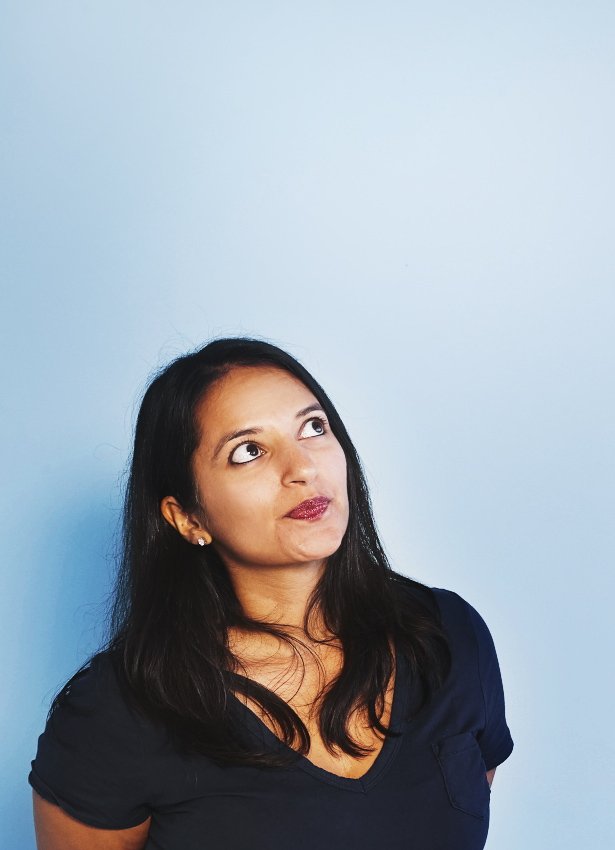
Soni Midha
Kyoko Hamada for Quanta Magazine
Inside, it’s serious business for the presenters, who deploy overhead projectors, cue cards and a personal cover letter, addressed, “Dear Evaluator.” “Welcome to 2016 geometry roundtables,” begins Reon, who notes that he’s into fashion and styling. Wearing a tie-dyed T-shirt with a collage of nuns, skeletons, centipedes, candles, President Obama and equilateral triangles, he presents his building-height struggle problem and his trigonometry work. “I remember the day Soni introduced the topic to us and I said, ‘Trigo what?’” But, as he continues in his letter, “my favorite topic of this semester turns out to be trigonometry, shockingly.”
Janet, in her letter, confesses, “Math and I haven’t always been on good terms. In middle school I used to despise math, I would get so annoyed and frustrated.” But she aces the roundtable, receiving a hug and high-five from Midha and the designation of a grade-10 geometry expert. “Even though I hate something, I’m still going to try,” she says.
In a sense, math is a metaphor for life. And the ability to solve problems and think independently is ultimately the lesson that Midha hopes to impart. “You struggle in math. You struggle in life,” said Midha, who by way of example often tells her students about her struggles with classical guitar. “It takes me forever sometimes to get through a piece. Because it’s so hard, and it sucks, and I don’t want to do it. But I keep going because I know I want a successful outcome, I know I want something really great at the end.”
The same applies to Midha’s goals as a teacher, a job she anticipates doing forever (this year she’s teaching calculus for the first time). “I’m not saying there aren’t days when I’m, like, ‘Uhhhh, I don’t want to do this.’ There are always days where we all kind of just need to take a break. But I’m an educator for life. No admin dreams here. Teacher for life, that’s the goal.”
THANK
On July 28, exactly a month into summer break, Channa Comer is in her Bronx apartment, hemmed in by plants, keepsakes from overseas research trips, a rack of immaculate vintage clothing she plans to sell online, and her two timid cats, Lucy Luu and Teena Turner. She’s sorting through boxes of quirky drawings and letters from some of the estimated 1,000 kids she’s taught over the past nine years. She has moving companies to interview and boxes to pack.
Comer waited until the last week of school to break the news to her students, not wanting it to be a distraction. She was leaving Baychester Middle School. She was done teaching.
“I love these kids. I love them,” she said. “But the system, I think, is extremely flawed, and I just need a break.”
In late August, she began her move to Maryland, where she could commute to the Department of Energy’s Office of Science in Washington, D.C. Months earlier, she had been accepted into the Albert Einstein Distinguished Educator fellowship program, where she hopes to gain a broader perspective on national educational policy.
Why do master math and science teachers, who are passionate about their content area and about developing their craft, who are creative, smart and engaging, and who adore their students — why do they quit teaching? Some have given all they can; they’re burned out from thinking and worrying about their students seven days a week, and from battling with school officials over resources, scheduling, a shortage of support, and an abundance of rigidity. Often these talented, driven individuals are lured away by career options that offer greater professional stature and higher pay. And some are just so naturally adventurous that they were always bound to move on. For Comer, it was all of the above.
“I’m really proud of the body of work that I’ve built as a teacher,” she said. “I don’t know how it will be to be in an office all day instead of in the classroom dealing with students and meltdowns and singing and dancing.” But there are some things about teaching she will not miss: “There needs to be much more flexibility, much more autonomy given to teachers to be able to create and teach to their passion so that they can engage students more deeply.”
By all accounts, including Comer’s, she was given extraordinary freedom and flexibility by her principal and school. “Channa’s earned the ability to do things her way,” said Principal Mangar. “Anytime she’s asked for something, or asked, ‘Can I try something?’ she’s outperformed expectations. I see myself as an offensive lineman — clear the way for her to be able to do good work.”
Still, she got dinged (by administrators other than Mangar) for transgressions like failing to write a learning objective on the board before every class. Comer says she did not have time for that after class periods were shortened from almost an hour to 45 minutes. And besides, her projects and learning objectives, which students recorded in their notebooks, took days or weeks to complete.
“It’s an incredible loss for her students and her school because through all her experiences and bringing them back to the classroom, whatever teacher comes next can’t bring what she brings,” said Michael Zitolo, who admits that the Einstein fellowship is a logical next step for his friend. He hopes her voice will be powerful at the national level, that she can push for fewer discrete standards and more “big-picture ones” like the Next Generation Science Standards.
“You can’t replace someone’s passion,” Mangar agreed. For his part, he hopes Comer will return after her 11-month fellowship ends. “I have a calendar reminder for when to contact her,” he said. “She’s always welcome. This will always be home.”
Even in the chaos of relocating across state lines and dealing with broken elevators, gridlock, a thunderstorm, moving company miscalculations, and other delays, Comer found time to pen a lengthy email criticizing the way science is currently taught: “I think we are approaching it wrong. I don’t think science at the lower levels should be separated into discrete subjects, but rather integrated and taught in the context of real life.”
She said she would be happy to discuss these ideas further, and that she’d be back in New York until August 24, after which she’d be in Maryland “for good.”
Editor’s note: Math for America receives funding from the Simons Foundation.
An excerpt of this article was reprinted on Wired.com.
